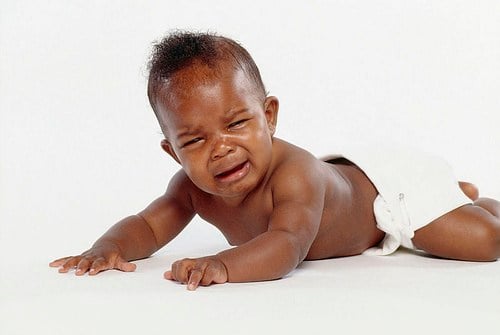When a young child has a fever that’s above 100.4°F or 38°C, he may have convulsions. These convulsions or febrile seizures usually last for a few minutes and stop on their own. The fever may continue for some time.
Febrile seizures can look serious, but most stop without treatment and don’t cause other health problems. Some kids might feel sleepy after one, while others feel no lasting effects. Even then, it’s important to take steps to ensure the prevention of convulsions in your children.
We’ve rounded up some tips to help you do just that. But first, let’s look at some other probable causes of convulsions.
Lack of oxygen, head trauma, or illness could bring on convulsions. Children are diagnosed with epilepsy when they have seizures that occur more than once without a specific cause. In most cases, the cause of the convulsion can’t be identified.
This type of seizure is either “idiopathic” or “cryptogenic,” meaning that we don’t know what causes them. The problem may be with an uncontrolled firing of neurons in the brain that triggers a seizure.
Symptoms Of Convulsions
A seizure occurs when a large number of the cells send out an electrical charge at the same time. This abnormal and intense wave of electricity overwhelms the brain and results in a convulsion. It can cause muscle spasms, a loss of consciousness, strange behaviour, or other symptoms.
Simple febrile seizures are the most common. They’re usually over in a few minutes, but in rare cases can last up to 15 minutes. During this type of seizure, a child may:
-
- convulse, shake, and twitch all over
- roll the eyes
- moan
- become unconscious (pass out)
- vomit or urinate (pee) during the convulsions
Complex febrile seizures last longer than 10 minutes, happen more than once in 24 hours, and involve movement or twitching of only one part or one side of the body.
Useful Tips For The Prevention Of Convulsions
There’s no guaranteed way to prevent convulsions. This is primarily because doctors are not very sure what exactly brings on an episode. But you can do the following things as a matter of personal precaution.
- Lower your child’s fever and make him more comfortable.
Use paracetamol or ibuprofen and take off extra clothing. Sometimes a convulsion will be the first sign of a fever. Paracetamol doesn’t reduce the risk of convulsions. Give fever medicine as prescribed by your child’s doctor.
- Don’t bundle up or overdress your child.
The body loses heat through the skin. If you bundle up your child, the excess heat cannot escape.
- Sponge your child with lukewarm water.
Put him or her in a shallow bathtub containing 2 to 3 inches of water and drip water over his or her body. Do not use alcohol or cold water to bring down your child’s fever. If your child begins shivering or shaking in the bathtub, stop sponging and remove him or her from the bathwater.
- Give your child lots of fluids.
While your child has a fever, give plenty of fluids to prevent dehydration. Constant hydration will quell the fever and ultimately keep the convulsions away.
- Avoid flashing lights
Keep your child away from the “strobe effect” from fast scene changes on a bright screen. Rapidly changing colours or fast-moving shadows or patterns can all trigger seizures or convulsions. You want to keep your child away from all of those.
The ideal prevention is to generally avoid causes or triggers of convulsions. If your child has a lot of convulsions, your doctor might rarely consider prescribing anti-convulsant medication. Your child would need to take this medication continually for several years to prevent convulsions. But this is a rare treatment, which a paediatrician would supervise.
Are There Foods That Can Trigger Convulsions?
Stimulants such as tea, coffee, chocolate, sugar, sweets, soft drinks, excess salt, spices, and animal proteins may trigger convulsions. It happens when these foods suddenly change the body’s metabolism. Some parents have reported that allergic reactions to certain foods such as white flour also seem to trigger seizures in their children. Certain nutrient shortages, such as a lack of calcium, have also been found to trigger seizures.
Epilepsy And Regular Convulsions
If your child convulses regularly, speak to your doctor. He may be tested for epilepsy.
Epilepsy is a common brain disorder characterized by recurrent convulsions. The highest number of new cases is in seniors and young children, but epilepsy can begin at any age.
A health care professional may consider epilepsy as a possible diagnosis when your child has had two or more seizures. A medical diagnosis of epilepsy is based on multiple pieces of information: the description of the episodes; the person’s medical and family history; and the results of diagnostic tests. Fortunately, epilepsy is a treatable condition. Many kids with epilepsy will achieve good seizure control with medication.
This article was first published on AfricaParent.com
Copyright 2024 TheCable. All rights reserved. This material, and other digital content on this website, may not be reproduced, published, broadcast, rewritten or redistributed in whole or in part without prior express written permission from TheCable.
Follow us on twitter @Thecablestyle

